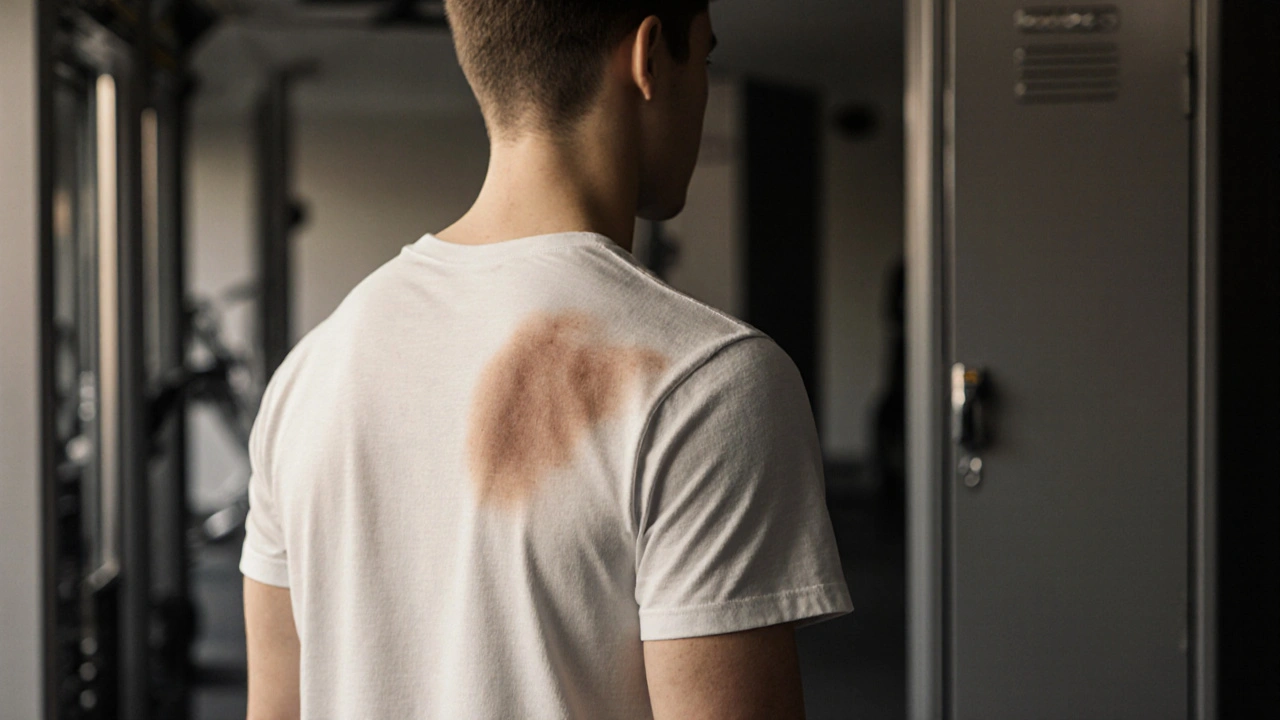Learn practical ways to stay active while managing tinea versicolor, from breathable fabrics and workout timing to post‑exercise skin care and treatment tips.
When dealing with tinea versicolor, a common fungal skin condition that creates light or dark patches. Also called pityriasis versicolor, it usually appears on the chest, back, and upper arms. The condition originates from Malassezia, a type of yeast that lives on normal skin but can overgrow in warm, humid environments. Diagnosis often relies on a simple skin examination, sometimes followed by a Wood's lamp test that highlights the affected areas. Treatment typically involves antifungal medication, either topical creams or oral tablets, to suppress the yeast and restore uniform colour. In short, tinea versicolor is a condition you can manage with the right knowledge and products.
The yeast Malassezia feeds on the fatty acids in our skin. When you sweat a lot, wear tight clothing, or spend time in hot, moist climates, the yeast can multiply quickly. This overgrowth disrupts melanin production, leading to the characteristic speckled look. Teenagers and young adults are most often affected because their oil glands are more active, but anyone can develop the rash. Hormonal changes, oily skin, and a weakened immune system also raise the risk. People often notice the patches after a summer vacation or a period of intense exercise, when the skin has been exposed to heat and humidity for days on end.
Doctors usually start with a visual check; the patches may be pink, brown, or white, depending on your natural skin tone. A Wood's lamp (UV light) can make the affected spots glow yellow‑gold, confirming the diagnosis without a lab test. When the condition is mild, over‑the‑counter topical antifungals like selenium sulfide shampoo, ketoconazole cream, or zinc pyrithione wash do the job. More extensive or stubborn cases might need prescription‑strength creams or an oral agent such as itraconazole or fluconazole for a short course. Lifestyle tweaks—using a gentle cleanser, wearing breathable fabrics, and keeping the skin dry—help keep the yeast in check after treatment. By pairing the right medication with these habits, most people see clear skin within a few weeks and experience fewer recurrences.
Below you’ll find a curated set of articles that dive deeper into the medications, skin‑care strategies, and practical tips mentioned here. Whether you’re looking for a quick home remedy, a detailed drug comparison, or guidance on preventing future flare‑ups, the collection offers actionable insights to keep your skin looking its best.

Learn practical ways to stay active while managing tinea versicolor, from breathable fabrics and workout timing to post‑exercise skin care and treatment tips.